MusicRadar Verdict
The best analogue delay pedal currently available anywhere and a future classic from Boss. The blend of glorious sounds with cutting-edge control and functionality means this could be your do-it-all delay.
Pros
- +
Impressive array of spectacularly good analogue delay modes
- +
The best modulation we've heard on a delay
- +
Intuitive controls combined with cool retro looks
- +
Stereo and midi functionality for enhanced rig functionality
Cons
- -
It's a serious investment – but a very well-featured pedal
- -
Lack of low cut, or stereo-in may not suit some players
MusicRadar's got your back
Boss DM-101 Delay Machine pedal: What is it?
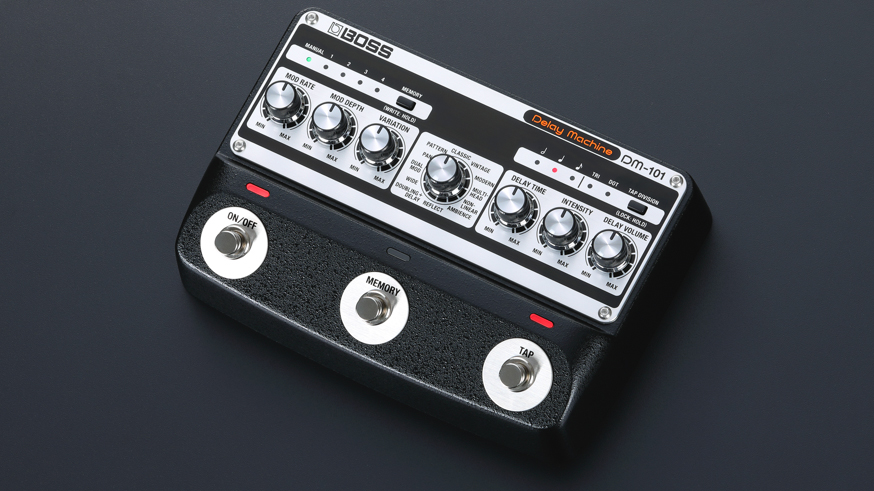
Waaay back in 1977 Boss released its first analogue delay pedal; the DM-1. In 1981 the first compact analogue pedal with the DM-2 followed by the DM-3 in 1984. A lot has happened since then – a lot of Boss pedals – including numerous digital delays with the DD-2 actually predating the DM-3. But after the DM-3 was discontinued in 1988 there was nothing from the company in terms of an analogue delay. Nothing! A headscratcher, because it was onto something good. Very good. With the DM-2 building a sizeable following in the interim decades, the Waza Craft DM-2W finally started to put things right in 2014. Consider that the deposit, and this the full payback.
The DM-101 nods back to the DM-1 design with a VHS- (sorry, I'm an '80s child) size dimensions and silver panel on black chassis. Last year's Space Echo 202 did the same but that features digital modelling; this is a BIG analogue statement. It's eight Bucket Brigade Device chips and 12 delay modes big. Boss is serious about analogue BBD delay again. But has it waited too long?
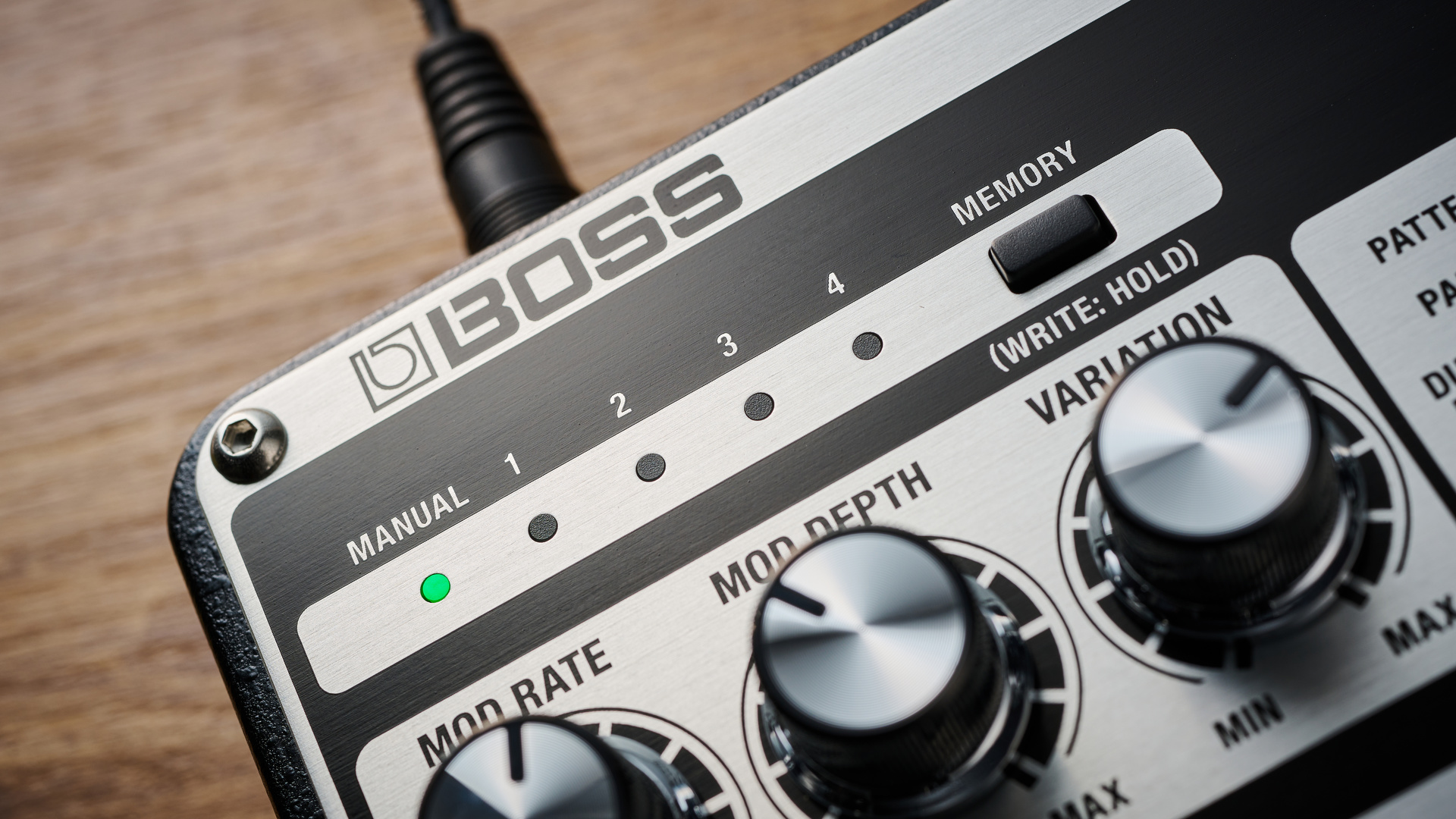
You can't just stroll back into the market with a five-hundred-dollar pedal, can you? This pedal represents one of the most expensive delay pedals available on the market today and it emerges at a time where digital emulation of analogue sounds has been getting into spooky territory. Just how much difference does analogue make, how much do we need, and how much are we willing to pay for it?
We say need, delay pedals are a want thing for a lot of us. If we're honest, we're always looking over the hill for the next vista of lush repeats and warm but gritty modulation. We're spoilt for choice; always with an ear and and eye on the next release. But what if there was an endgame? A pedal that got the balance between functionality and vintage vibe so right, we could stop flipping pedals and just bask in one pedal's glory? The Delay Machine.
Boss DM-1-1 Delay Machine pedal: Performance and verdict
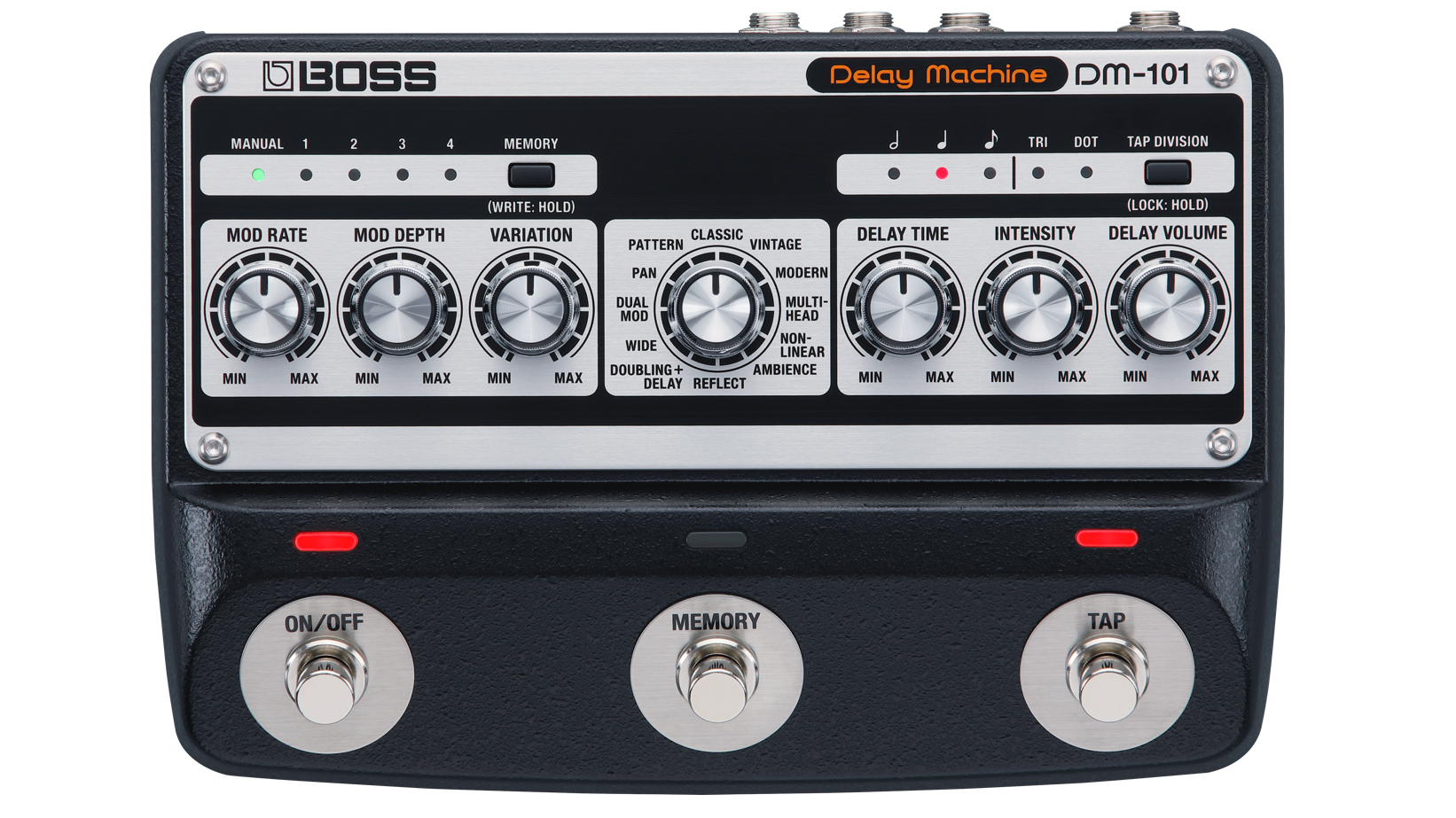
Boss is flexing its muscles right now – just in case you forgot this is the most important company in effects history. We've had the Space Echoe reissues, and the recent SDE-3000D to send our digital heads giddy and spinning. Now this. And the specs of the DM-101 are impressive; aside from the wealth of modes with modulation for every one, four onboard presets (and manual mode) with tap tempo, there's 1200 milliseconds of delay time thanks to all those BBD chips (in the pedal's Classic mode) in an all-analogue signal path here. Plus MIDI, expression pedal control, and full stereo output in six of those 12 modes.
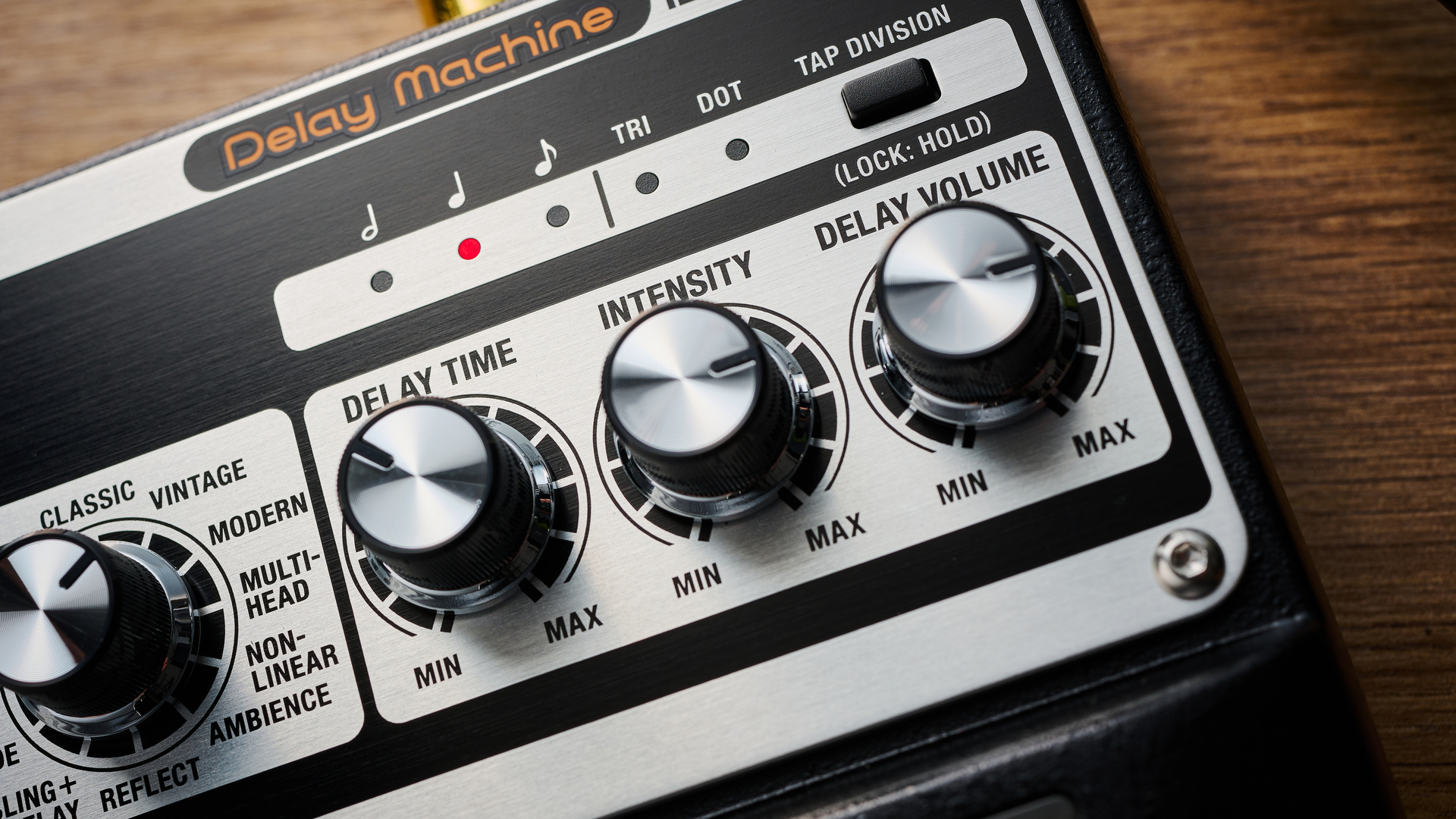
Feature overload isn't a problem here in the user experience; the digital 'smart CPU control, intuitive layout and size dimensions combine to reel you in fast. We can't see how Boss could have scaled this unit down anymore without undermining the user experience. We didn't use the manual much because it was logical from the get-go; Delay time, Intensity (feedback), Delay Volume and Rate (speed), Depth and Variation for the modulation. That last one is interesting because it changes parameters based on the model chosen.
Ok, there is a bit more of a learning curve if you're manually selecting the sub-divisions options in the top right, along with the dotted, half, quarter, eighth and triplet rhythmic repeat combinations. But it isn't too steep. On the whole, this pedal serves it all up with very clear surface control signposts on the panel – you just need to get stuck in.
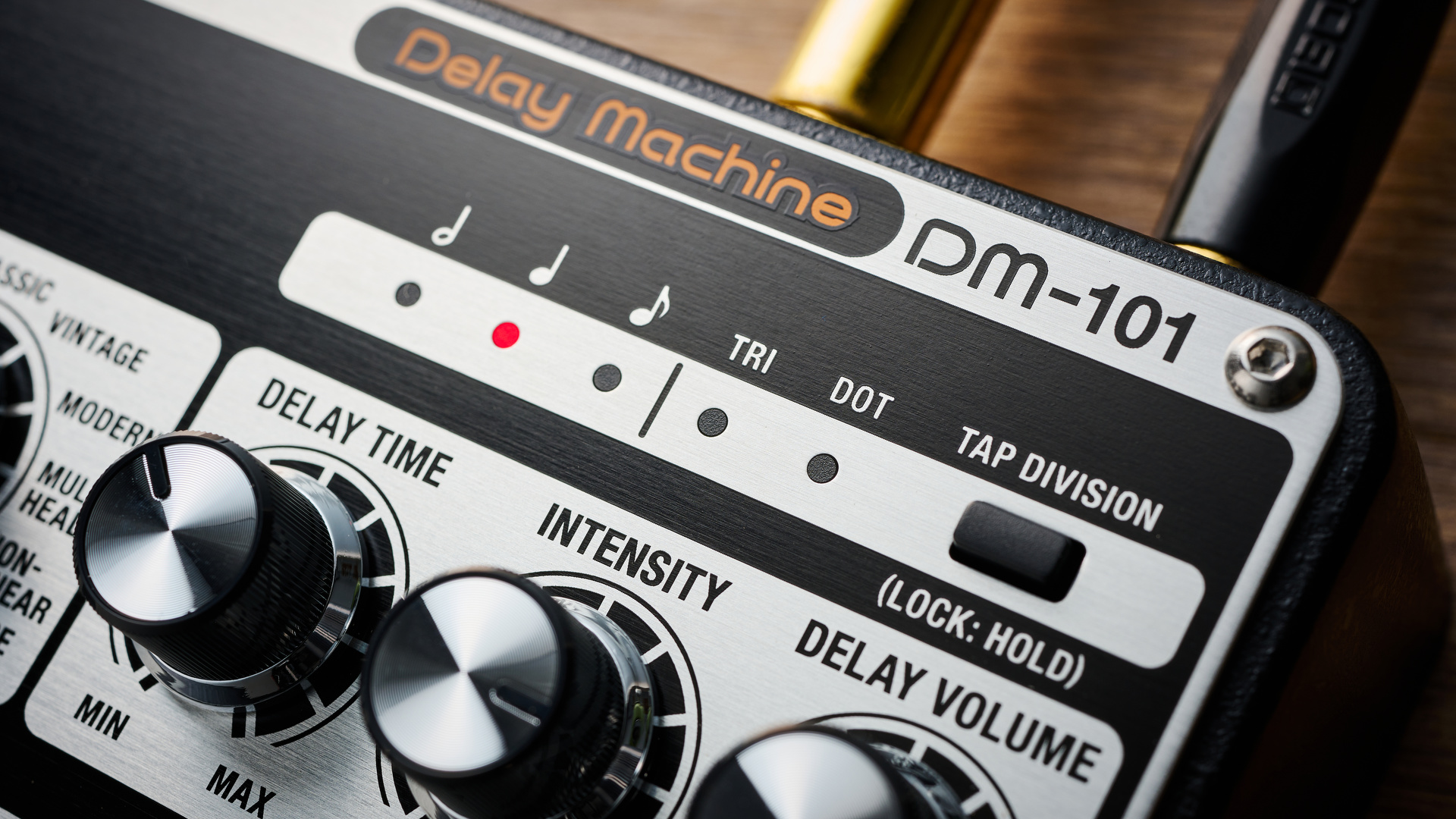
Our first stop on the mode wheel is Vintage; it's based on a DM-2, except the extra options of this pedal enhance this classic foundation significantly; modulation, tap tempo and subdivisions are now available. And more delay time than the original. So that's already a $175 reissue effect with some very useful bells on in just one of the 12 modes.
It turns out that's just a slice of the cake. I could play it cool, and I'm trying not to get carried away but as you explore the 12 modes it just keeps, ahem, repeating; the DM-101 really does sound spectacular. It's as if Boss gathered all its best people in a room, wrote analogue delay on a whiteboard and told them to go and conquer.
There's a lot of cake to digest; Classic is 'warm analogue' mode with the Variation knob controlling the waveform of the modulation, as it does on the Vintage DM-2 mode and Modern. That Modern mode has a clearer high end and… actually I'll stop throwing a huge bucket of specs at you now because Boss created an excellent infographic (it looks like a cake!) that explains it all in a much clearer way than I can below (click top right to enlarge).
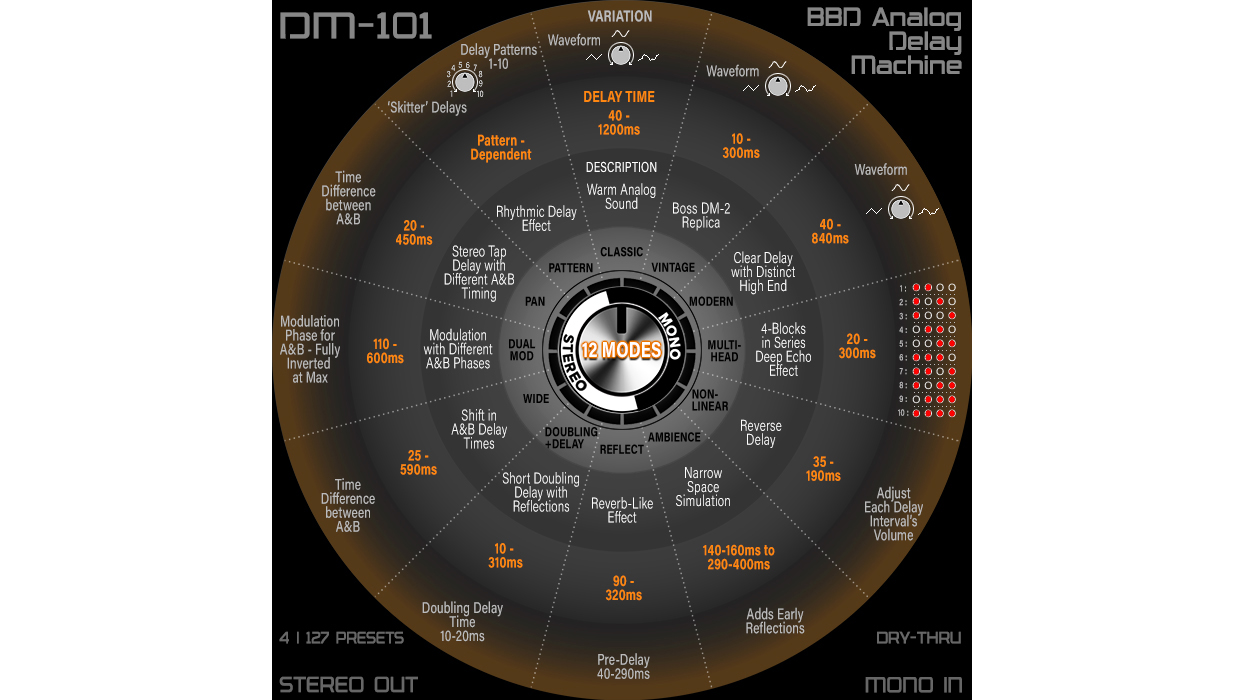
Between them, these modes offer a wealth of lush, warm and pulsating tones that are great as a creative platform for launching new ideas or recreating classic tones
The Variation knob is really important; on the Tape Echo mode it chooses between ten different head patterns. In the Pattern mode it offers ten different 'skitter' delay patterns. In Ambience mode it brings in 'early reflections' that widen the soundscape. All extra icing.
Stereo is available for the second half the modes, while the Ambience and Reflect reverb-esque modes don't have tap tempo and sub-division options. The latter could be a always-on option for some players. Between them, these modes offer a wealth of lush, warm and pulsating tones that are great as a creative platform for launching new ideas or recreating classic tones.
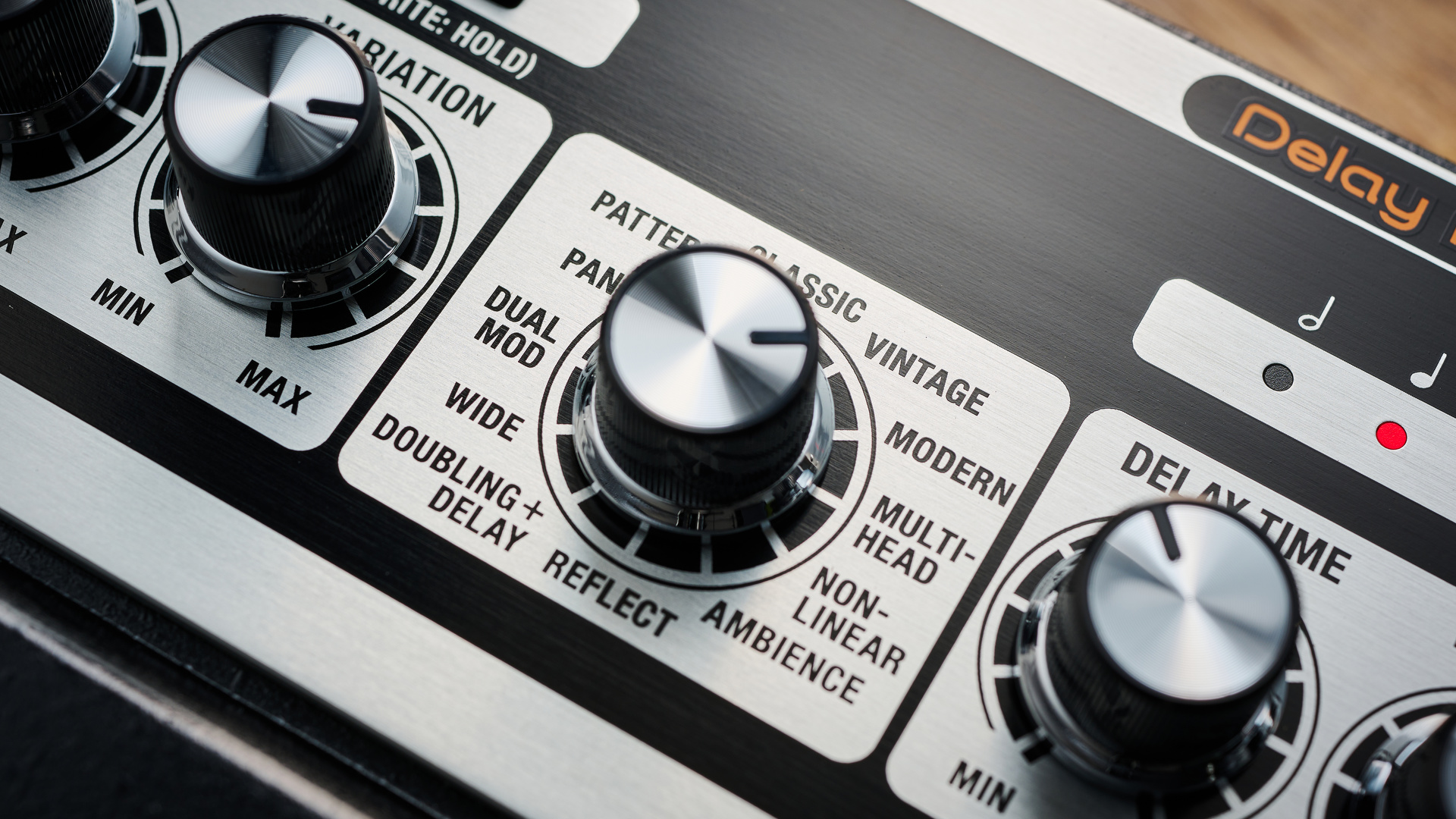
Everything here sounds and feels like an advert for the beauty of BBD delay
This machine feels alive; you hear it when you turn the controls and the modulated repeats that spiral into the void. Wide showcases this in stereo mode spectacularly well with its shifting delay times (but the majority of us will not use this with a stereo rig, admittedly), and Dual Mod needs to be heard to put any doubt aside that Boss are daddies of the craft. It's vibe city, but it sits in a mix in such a natural way – that warmth and darker character of analogue offer a bottom end that's importance is easily overlooked; it helps the delay sounds here to complement and enhance your playing rather than swamping it.
The DM-101 is a reminder that the details can't quite be fully recreated in the digital realm yet. The caveat is there's no way here to shape the bottom end of repeats and some people may prefer digital or a rare example of an analogue units that offers it like the $549 Suhr Discovery, with its high and low pass filters, for that reason.
But everything else here sounds and feels like an advert for the beauty of BBD delay. You'll get lost in it and go down rabbit holes, but the ease of using this pedal means you can dial in what you need fast too. From rockabilly slapback to doubling and bouncing, brooding, squalling atmospherics, the hands-on control and tweak experience is key to its charm. The overall result of digital control over analogue technology sets a really high benchmark here.
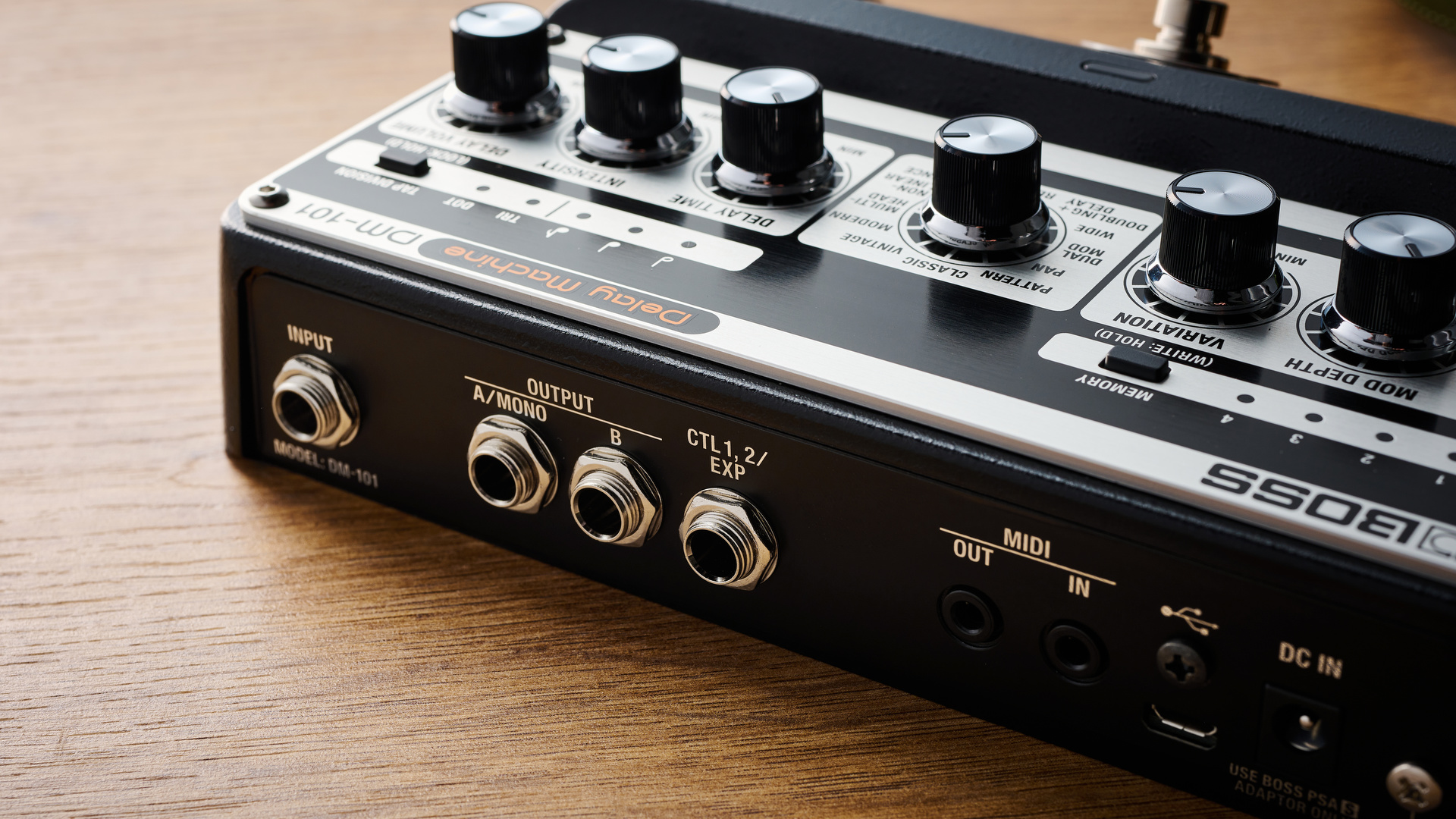
Drawbacks? Well, aside from adding a low cut control, one thing is apparent for me with live performance in mind. The four onboard presets are lovely to have but say you need to move seamlessly back and forth between two specific delays in a song and you're not using the 127 MIDI preset functionality offered; you only have one memory switch and it goes forwards through the presets.
You will need to set up your sounds with that in mind and have those presets in slots one and two, and three and four. But instead of making the pedal arguably too wide with an extra onboard footswitch, Boss has a workaround – you can designate an external footswitch controller to select the next or previous or memory preset.
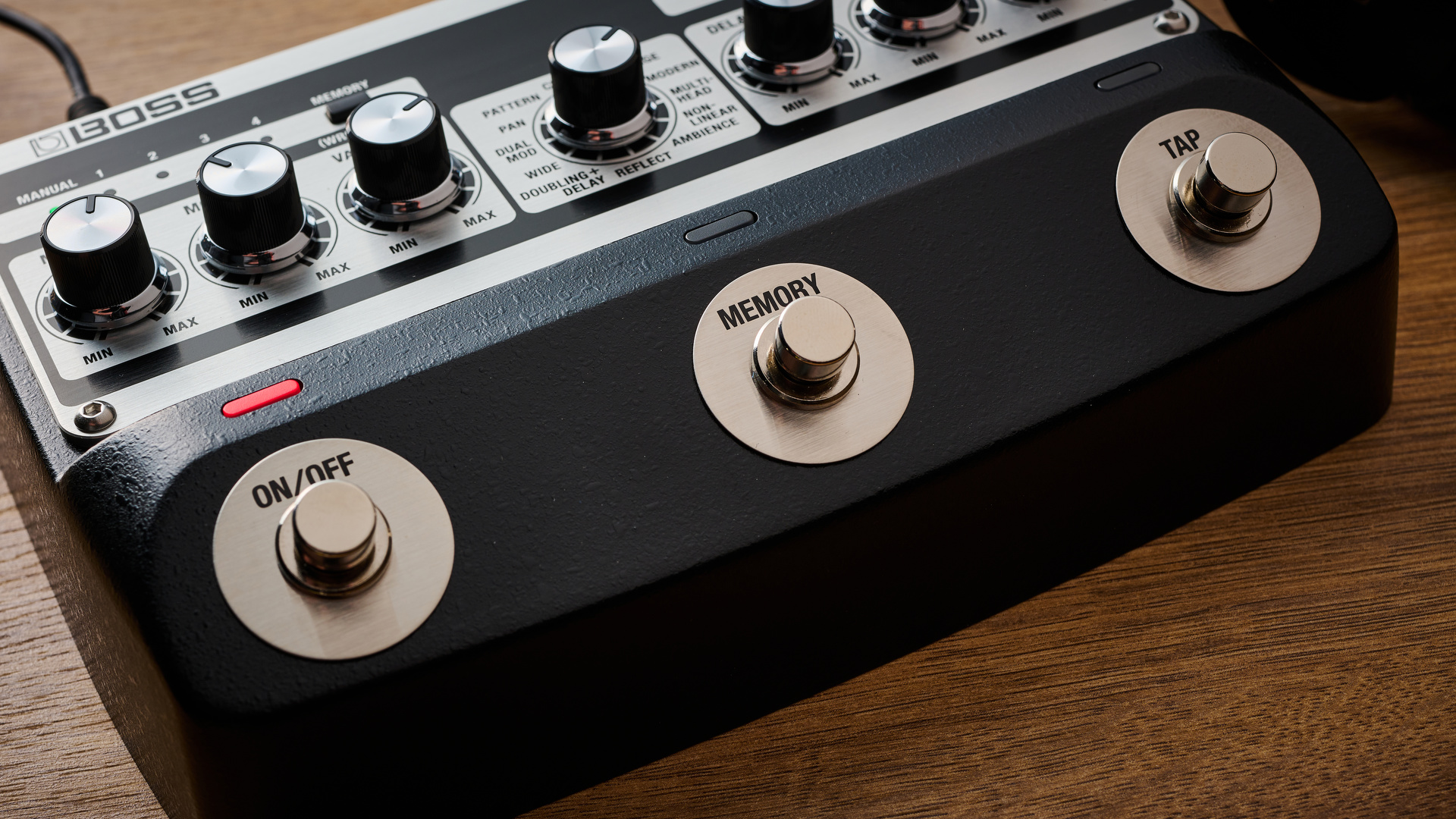
This is the greatest flagship for analogue delay I've ever heard
If real analogue delay is your thing, or even could be, and you need presets and multiple modes, this may be your final delay destination. This is a big achievement from Boss. Such is the level of control, connectivity and length of delay here, this could be many players' go-to delay pedal, period. Digital delay brought many precise, clean gifts; and continues to offer evolving flexibility – there are things digital can do with delay that analogue simply can't. Shimmer is just one example.
But this can fulfill a lot of needs, and dare I say it could replace a big box digital unit for some players – needs depending. The DNA of BBD analogue delay will always win fans. It's a character thing – it's not meant to offer the pristine repeats of many digital algorithms, and it ebbs and flows with colour and depth in its own way. In many ways with the 12 modes here. This is the greatest flagship for analogue delay I've ever heard. It's really inspiring.
It's also $500, but you could sell your other delays and stop buying any more after this. It looks, sounds and performs that well. Our big hope is future accessibility; that it's the beginning of a new age of the Boss DM series, with a more compact version (with less features) following for the players who can't free up the cash and pedalboard space for this. The Japanese company is on a roll here, so why not keep it going?
MusicRadar verdict: The best analogue delay pedal currently available anywhere and a future classic from Boss. The blend of glorious sounds with cutting-edge control and functionality means this could be your do-it-all delay.
Boss DM-101 Delay Machine pedal: Hands-on videos
JHS Pedals
Let's Play All
Pedalboard Of The Day
Andertons
Boss DM-101 Delay Machine pedal: Specifications

- Type: Analogue multi-mode delay pedal
- Controls: Modulation Rate, Modulation Depth, Variation, Mode selection, Delay Time, Intensity, Delay Volume, Tap Division button, Memory button, On/Off footswitch, Memory Footswitch, Tap-Tempo footswitch
- Delay modes: Classic, Vintage, Modern, Multi-Head, Non-Linear, Ambience, Reflect (stereo), Doubling Delay (stereo), Wide (Stereo), Dual Modulation (Stereo), Pan (Stereo), Pattern (Stereo)
- Features: Tap tempo, MIDI in and out via mini TRS (127 memory + manual presets), expression or footswitch pedal input, Micro USB for program update
- Bypass: Buffered
- Dimensions: 192 x 133 x 52mm [WxDxH]
- Power: 9V (PSU included, 260mA current draw)
- Contact: Boss
- More info: Andertons, Sweetwater

Rob is the Reviews Editor for GuitarWorld.com and MusicRadar guitars, so spends most of his waking hours (and beyond) thinking about and trying the latest gear while making sure our reviews team is giving you thorough and honest tests of it. He's worked for guitar mags and sites as a writer and editor for nearly 20 years but still winces at the thought of restringing anything with a Floyd Rose.
“I used everything I knew about music”: How Green Day exceeded expectations with their most ambitious song
YouTube just added AI tools that makes musicians, library music and video editors redundant
“Every one of them said yes without hesitation": Hank Marvin and Roger Taylor have just remade a '60s classic for charity










